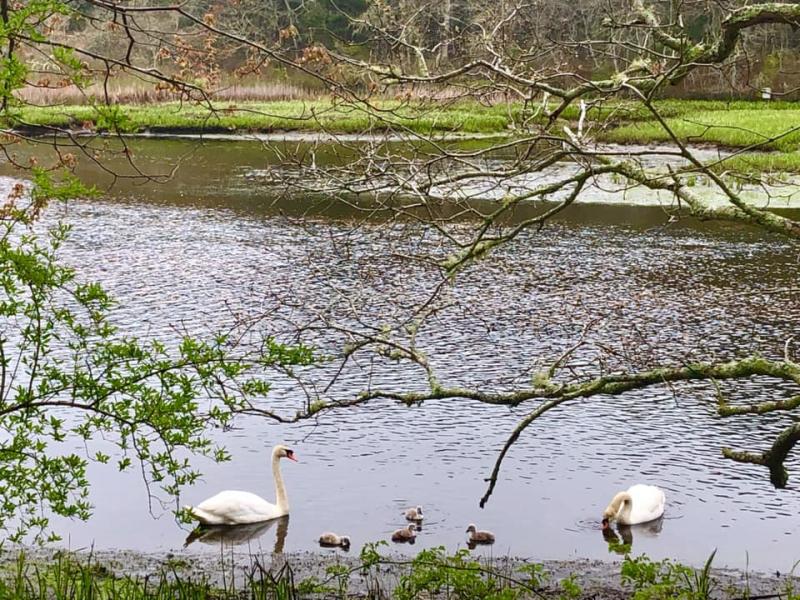Naturalist’s Corner: Mute Swans
Posted July 1, 2020
Written by Kyla Isakson
Mute swans (Cygnus olor) are large waterfowl that are found in a wide range of aquatic habitats. Mute swans are a nonnative species that was originally imported from Europe in the late 1800s and early 1900s to beautify large estates, zoos, and city parks. They are now found year-round in most of the Northeast and around the Great Lakes Region.
Mute swans are typically 50 to 60 inches long, and their wingspan can reach up to 93 inches (that’s almost 8 feet!). They eat a large amount of aquatic vegetation and animals including tadpoles, frogs, snails, fish, and insects. Swans form long lasting pairs, and when breeding, the male will select the nesting location for the female to approve in early spring. Females usually lay two to five eggs, and they hatch after 34 to 41 days. The baby birds, called cygnets, can leave the nest and swim shortly after hatching, and they can fly around 60 days after hatching. To defend their breeding territory, mute swans can become very aggressive. Their aggression and large appetites can cause problems within the ecosystem because they can “displace native species from breeding and foraging sites, and can damage feeding habitat by overgrazing aquatic vegetation” (All About Birds).















